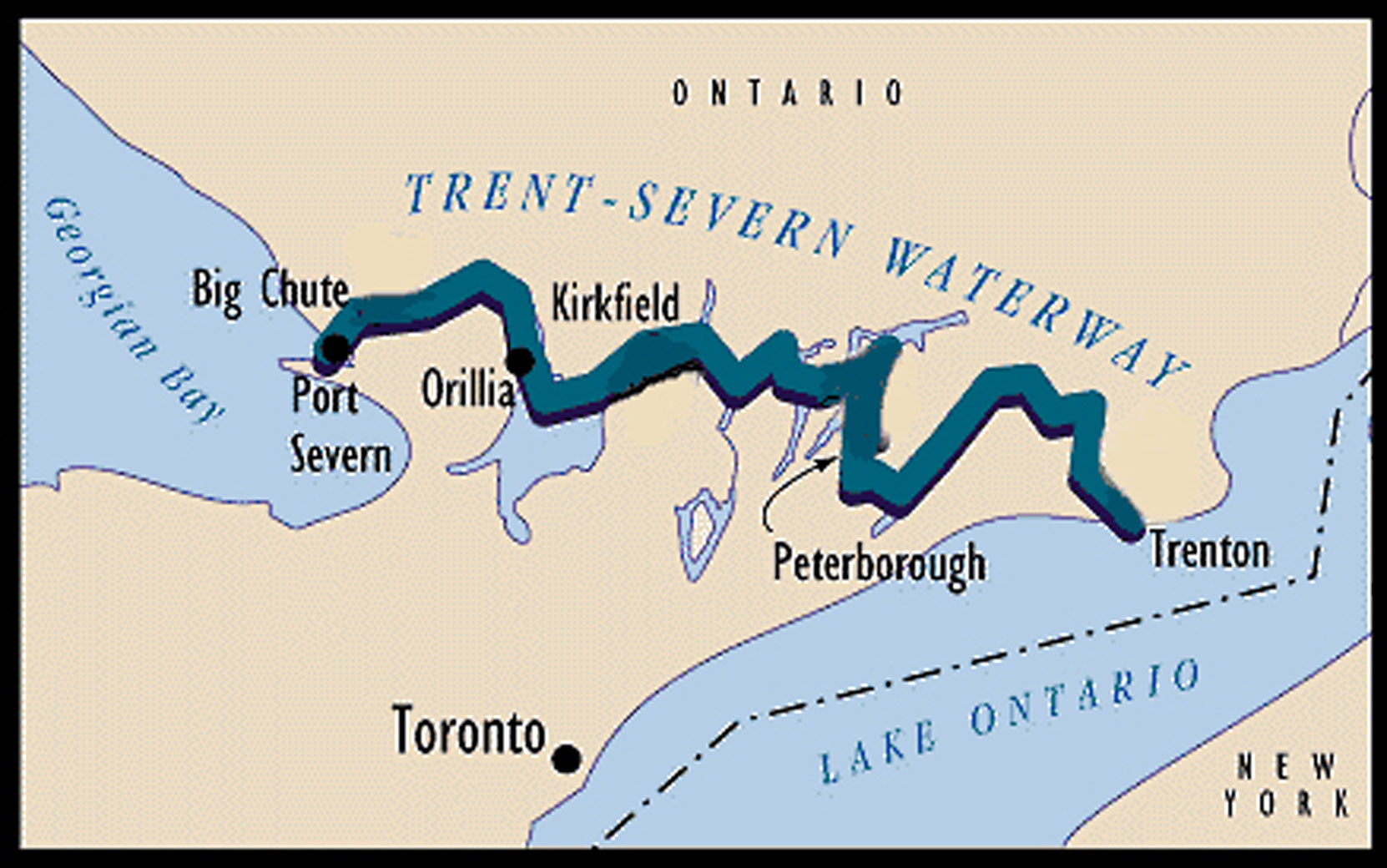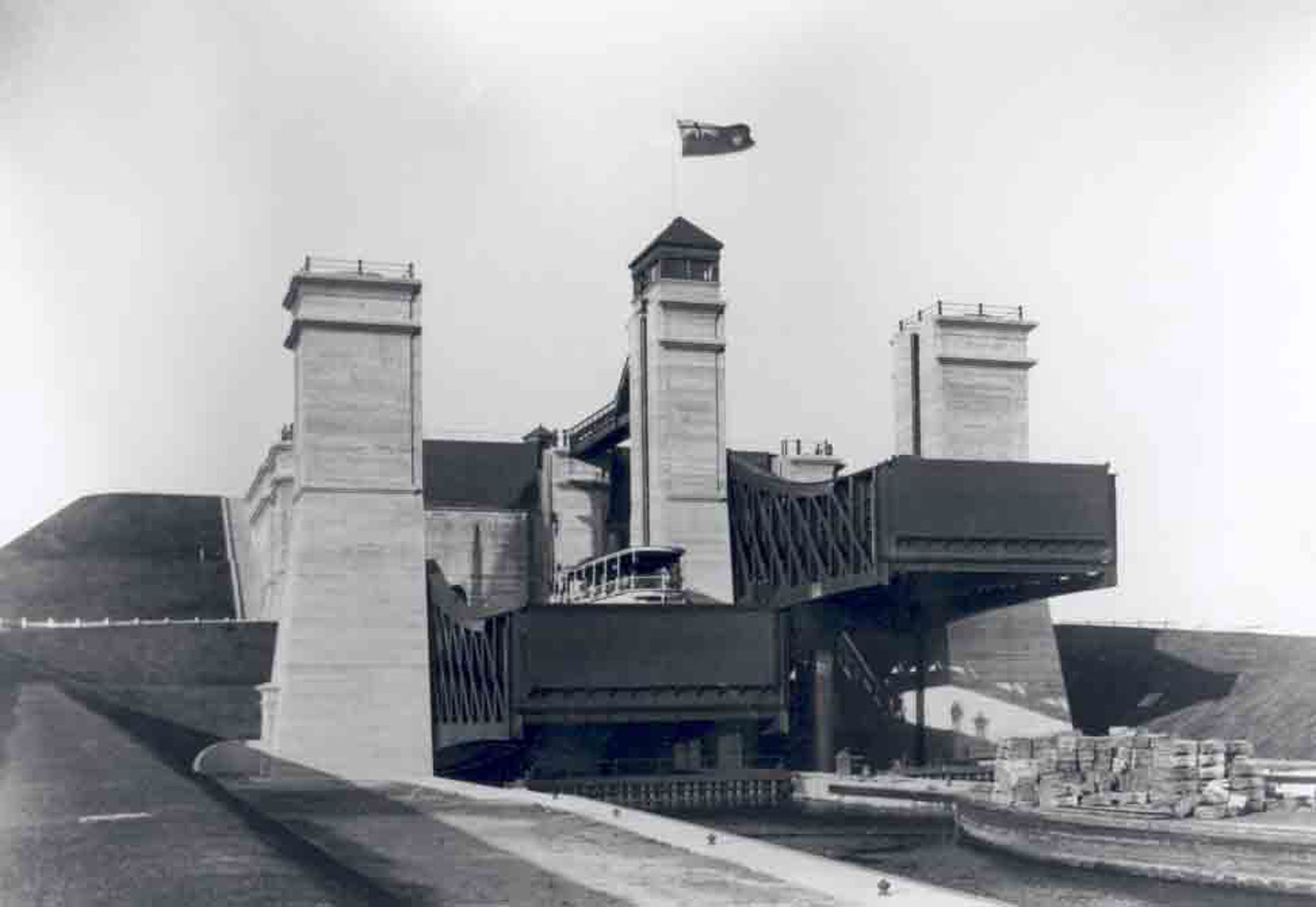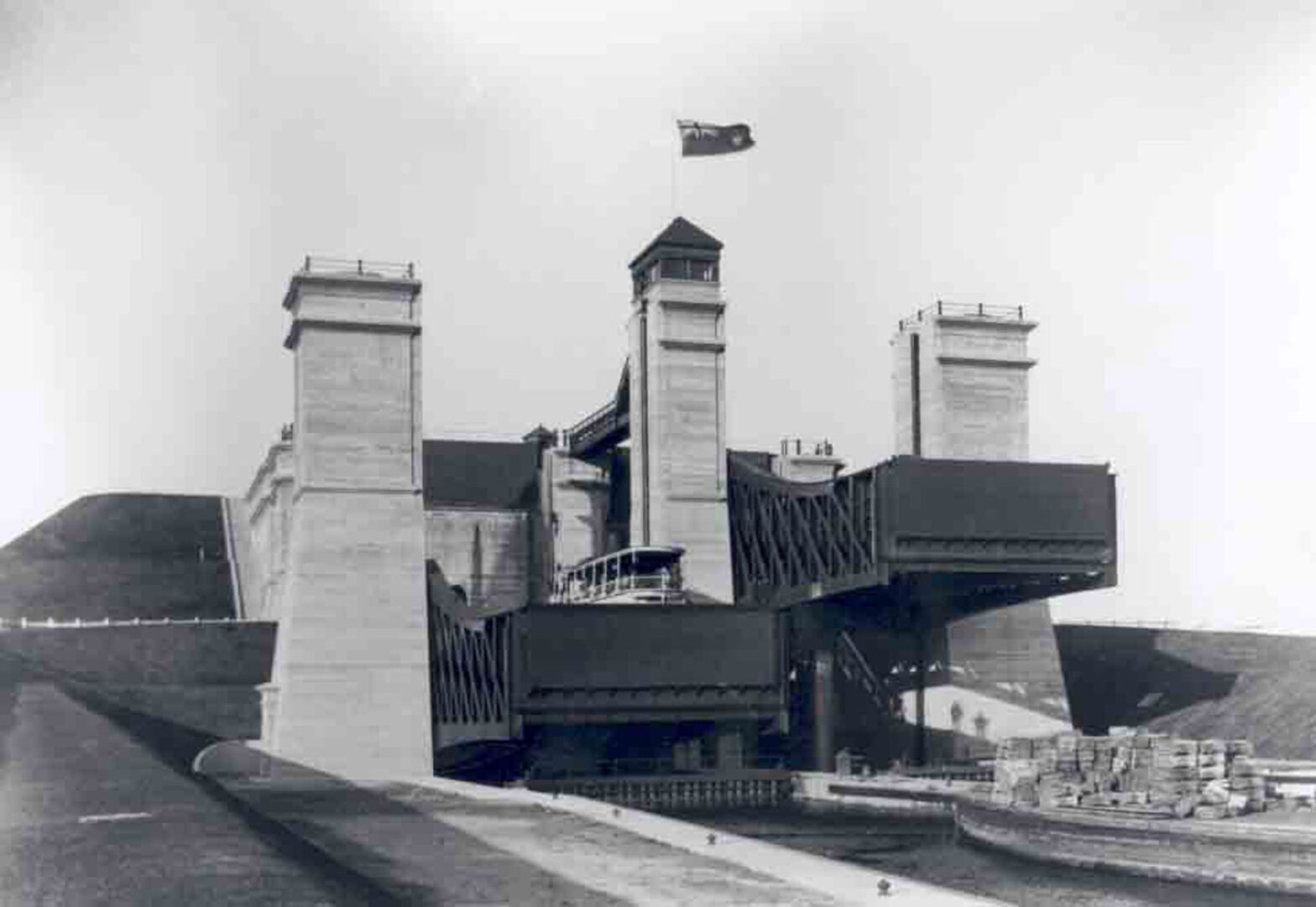Trent-Severn Waterway
The Trent-Severn Waterway is now a National Historic Site of Canada. It runs for approximately 400 kilometers between Port Severn, Ontario and Trenton, Ontario and was built between 1882 and 1920 as an inland water transportation route between Lake Ontario and Georgian Bay on Lake Erie.

The Trent-Severn Waterway plays a significant role in Robert Butchart’s business affairs prior to his move from Owen Sound, Ontario to Victoria, British Columbia in 1904.
In 1900 Robert Butchart, George S. Kilbourn, Horace B. Smith and William Bravender incorporated the Lakefield Portland Cement Company, based in Lakefield, Ontario, with the intention of setting up a cement supplier close to the Trent-Severn Waterway construction on the Otonabee River near Peterborough, Ontario. Lakefield is approximately 20 kilometers north east of Peterborough on the Otonabee River and cement could be easily shipped from Lakefield to Peterborough by barge along the Otonabee River.
Here is a map showing the location of Lock 26 on on the Trent-Severn Waterway in Lakefield, Ontario.
One of the major concrete structures on the Otonabee River was the Peterborough Lift Lock, which was completed in 1904. The Lakefield Portland Cement Company was one of the leading suppliers, and possibly the primary supplier, of cement for construction of the Peterborough Lift Lock.
The Peterborough Lift Lock is now the Peterborough Lift Lock National Historic Site of Canada.

Here is a map showing the location of the Peterborough Lift Lock National Historic Site of Canada:
Here are links to more historic sites along the Trent-Severn Waterway:
- Canal Lake Concrete Arch Bridge National Historic Site of Canada
- Lockmasters’ House, Sidney, Ontario
- Mnjikaning Fish Weirs National Historic Site of Canada, Ramara, Ontario
Would you like to leave a comment or question about anything on this page?

